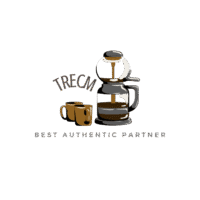Buying a coffee machine, grinder, beans… are all these expenses keeping you from making a good coffee at home. Do you always have to run to a local cafe to get a cup of good quality brew? Not anymore! In this blog post, we are going to talk about how to make great quality coffee at home and on a budget so that you don’t burn a hole in your pocket while buying that expensive coffee machine you can easily do without.
Although the cafe experience can never be replaced, a good cup of coffee at home wouldn’t harm either. After all, why not start your day with a quality brew to get that boost of energy in the morning when you can? So let’s get started with three simple steps.
STEP 1: Get a Good Coffee
When you visit a coffee shop, you might have sometimes noticed a vast difference in the prices of coffee. This is not just because of the fancy packaging of the coffee on the expensive end of the spectrum—it’s because of the quality of the beans. The difference between a specialty and commodity (regular) coffee, is the same (or more), as fine and cheap wine, and craft beer or a regular off-the-counter beer.
While we do not mean to put off the normal commodity coffee, if what you crave is a premium experience then that is definitely not for you.
Whether the coffee is a specialty coffee or a regular coffee is determined by the specialty coffee association which checks its quality upon various parameters before giving the label. There are professionals with genuinely well-trained and sensitive palates for coffee, known as Q graders, who taste and score coffee, and unquestionably the best-tasting espressos are classed as specialty coffee.
It’s not the same as regular coffee in terms of where and how it is produced, handled, processed, exported and roasted. The explanation why the vast majority in the UK feel that there is not much difference in any coffee, irrespective of the brand, is grew up drinking the commodity coffee. The majority of that coffee tastes conventional coffee-like. It’s when you begin getting into specialty coffee, you truly acknowledge what a huge range of coffee that exists.
STEP 2: Grinding the Coffee
Did you know that the moment you grind your coffee, it starts losing its freshness? So most probably, the pre-grind coffee that you have been using has already devoid you of various aromas and flavors that you could experience in a freshly roasted and grided coffee. Regardless of which coffee maker you use, grinding the coffee is an essential step that you need to be very careful about after choosing the right beans.
Grinding your own coffee makes a big difference in making a quality brew. When you use freshly roasted (within 1-4 weeks of use) and ground beans—this is the magic pair that leads to amazing coffee. Coffee consists of so many compounds, flavors and aromas, so much so that scientists continue to explore why it boosts energy and provides health benefits. However, once ground, it starts losing these components very quickly (in minus, not hours).
All the goodness of coffee lies within its bean structure, and this gets exposed to the air after the coffee is roasted and ground. To avoid contamination of flavors and aromas, a good coffee grinder could be the best investment for you. The grinders do not have to be criminally expensive; you can buy a decent one for USD 30 or less. These come in variations, ranging from electric to automatic and manual, delivering different results.
Step 3: The Coffee Maker!
And we finally come to our key weapon, the coffee maker! There are various brew methods, including espresso, filter coffee, pour-over drippers, Aeropress, Moka Pot and French press. It is important that you know what type of coffee machine you want and then weighs your options accordingly. Not every expensive coffee machine will be good; sometimes the cheap ones can do wonders as well.
We’re going to talk about espresso here since that is one of the most-preferred brews around the globe. Operating an espresso machine is not something a layman can do—it needs some skills. You need to invest time and effort; those various trials and errors will eventually help you develop your home barista skills. You might be disgusted with your initial trials, but a little patience, interest and effort will lead you to that perfect coffee to kickstart your every morning.
You can go for a bean-to-cup coffee machine, which eliminates the need for grinders and other processing requirements. These range from electric to traditional (manual), semi-automatic and fully automatic, and can deliver exceptional results.
Hope you found this read useful. In our next blog, we’ll elaborate upon the various types of coffee machines to give you a fair idea of their features, use, benefits and more. Stay tuned!



